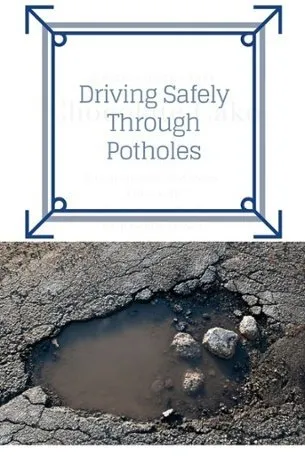If you drive, especially in North Texas, you are aware of the prevalence of potholes and how much damage they can do to your vehicle. While driving along on a balmy spring day if you have experienced the shock of being jolted and jarred by driving into a giant pothole that was created due to harsh winter weather, you know pothole damage can be extensive and can come on without warning. Educate yourself so you’ll know how to avoid potholes and, when that’s not possible, how and when to seek pothole damage reimbursement.
What Kind Of Damage Can Potholes Do To Your Vehicle?
The deeper the pothole, the more damage it can cause. Your car is most likely to be damaged not when it hits the pothole, but as it exits the pothole. That is becausethe affected tire bears a disproportionate amount of weight. This causes you to momentarily lose control of your car, which can culminate in:
- Dents and scratches to your paint
- Shock absorber, strut and suspension damage
- A misaligned steering system
- Damage to your car’s exhaust system
- Damage to your car’s engine
Any of these problems on their own can be expensive to repair. Unfortunately, if you drive over large potholes your vehicle may suffer from multiple types of damage at once. Warning signs of pothole damage include feeling unusual vibrations or hearing strange sounds while driving, noticing your tires’ rims are bent or the sidewalls are bulging, leaking fluid and unexplained punctures to your car’s undercarriage.
Who Is Responsible For Pothole Damage Caused By Texas Roads?
The short answer to the question is simple: Mother Nature. Potholes form when water seeps through normal cracks in the road and then freezes and expands. When the weather warms and the ice melts and the water evaporates, an air pocket is left behind. The weight of cars and trucks causes the air pocket to burst and potholes to emerge. In Texas, the Texas Department of Transportation is responsible for repairing the holes. Some municipalities like Fort Worth, Denton and Arlington have crews on duty to patch potholes as they are reported.
How To Drive Safely Through Potholes
Even the most alert driver is at risk of encountering a pothole and needing to make a split-second decision on how to drive through it in a way that minimizes damage. It’s always wise to leave at least one car’s length distance between your vehicle and the one in front of you. This increases your reaction time and the odds you’ll see a pothole far enough in advance you can take preventive measures. If you spot a pothole, steer away from it, lower your speed and do not apply your brakes if you must drive over the pothole. Braking will stress your car’s front suspension as opposed to allowing the entire car to absorb the impact, which will minimize the damage.
Now that it’s spring, pothole season is in full swing. If you suspect pothole damage on your vehicle, contact us today at Southwest Auto!
 11353 Mathis Avenue Dallas, TX 75229
11353 Mathis Avenue Dallas, TX 75229
